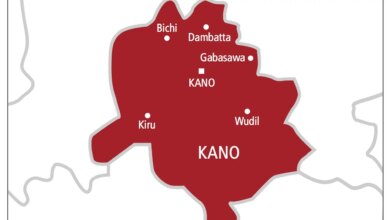Inflation eases further to 8.0% in October — GSS

The country’s year-on-year inflation further eased to 8.0 per cent in October from 9.4 per cent in September, on the back of continued stability in the economy.
On a month-on-month basis, inflation fell to -0.4 per cent in October from 0.9 per cent in September.
This marks the lowest rate since June 2021 and a ten-month low.
Speaking at the release of the October 2025 Consumer Price Index (CPI) and Inflation in Accra yesterday, the Government Statistician, Dr Alhassan Iddrisu, attributed the decline to the fall in food inflation.
He said food inflation dropped to 9.5 per cent in October from 11 per cent in September, while non-food inflation declined to 6.9 per cent from 8.2 per cent over the same period.
“Food is driving the October inflation,” Dr Iddrisu stated.
He explained that locally produced items recorded an inflation rate of 8.0 per cent, down from 10.1 per cent in September, while imported items saw a marginal decline to 7.3 per cent.
Food and non-alcoholic beverages alone contributed more than 50 per cent of overall inflation.
Dr Iddrisu stated that the latest figures confirmed that “price growth is slowing across most categories,” as both year-on-year and month-on-month inflation showed clear signs of easing.
He said the country’s inflation had now fallen for ten consecutive months, dropping from 23.8 per cent in December 2024 to 8.0 per cent in October 2025.
In terms of sectoral contributions, housing, water, electricity, gas and other fuels ranked as the second largest driver of inflation, contributing 17.6 per cent, followed by clothing and footwear (9.4 per cent), recreation, sport and culture (6.6 per cent), and alcoholic beverages, tobacco and narcotics (5.0 per cent).
“Together, these five divisions accounted for about 90 per cent of total inflation,” the Government Statistician stated.
Dr Iddrisu highlighted that the transport sector recorded a deflation of 4 per cent, reflecting the impact of relatively stable fuel prices and improved cost conditions across related industries.
He emphasised that the continued decline in inflation demonstrated that Ghana’s disinflation process remains firmly on course, with price stability gradually returning.
“The broad-based moderation in inflation shows that key drivers which previously fuelled price increases are losing momentum,” he said.
The Government Statistician indicated that overall, the October figures showed the country’s inflation outlook remained positive, with a broad-based slowdown across goods and services reaffirming confidence in the government’s efforts to restore economic stability.
He said improved food supply and steady energy prices were easing pressure on household budgets.
On regional inflation, Iddrisu said the North East Region recorded the highest inflation rate of 17.3 per cent, though down from 20.1 per cent in September.
He said the Bono East Region posted the lowest rate of inflation at 1.1 per cent.
By: Kingsley Asare
🔗 Follow Ghanaian Times WhatsApp Channel today. https://whatsapp.com/channel/0029VbAjG7g3gvWajUAEX12Q
🌍 Trusted News. Real Stories. Anytime, Anywhere.
✅ Join our WhatsApp Channel now! https://whatsapp.com/channel/0029VbAjG7g3gvWajUAEX12Q






